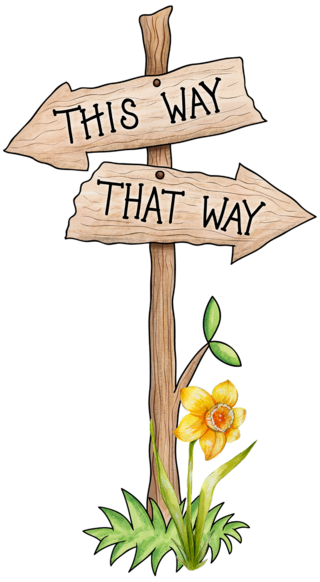Heuristics
Heuristics Are the Building Blocks of Human Behavior
Though heuristics are often seen as flawed, they are effective most of the time.
Posted October 5, 2020 Reviewed by Lybi Ma

Consider the following scenario: you are watching a movie in your living room. One of the supporting characters is played by someone who looks familiar, but you can’t quite put your finger on where you’ve seen that person before. It will drive you crazy until you figure it out, so what do you do?
If you’re like most people, you’d probably go straight to the internet to find the answer. In a matter of moments, you’ve likely satisfied your curiosity and acquired more information about that actor than you ever wanted to know.
When such situations arise, most people don’t expend much effort thinking through where to find the information they’re looking for. They behave as if they instinctively know the answer will be on the internet (and most likely Wikipedia).
But it isn’t instinctual at all. Instincts are inborn, but the nearly automatic decision to search the internet is learned – and by a lot of people. In fact, the decision to search Google[1] is made more than 3.5 billion times per day. Though that decision largely occurs without much conscious effort, it isn’t because of instinct. It’s because most people have developed a heuristic – a mental shortcut used to solve problems – in which searching the internet becomes a nearly automatic solution to answer a myriad of questions. Gigerenzer and Gaissmaier (2011) defined a heuristic as “a strategy that ignores part of the information, with the goal of making decisions more quickly, frugally, and/or accurately than more complex methods” (p. 454).
We rely on heuristics a lot. They help us make most of the decisions in our daily lives. Decisions such as what time we get up, the route we take to work, even how we work all generally rely heavily on heuristics. But heuristics don’t just operate when things go according to plan. If surprises pop up, such as slow traffic due to an accident, many people have developed heuristics that guide them in selecting an alternative route.
So, it stands to reason that without heuristics, we would run into a lot of problems trying to make decisions. Unfortunately, heuristics, like biases, are often discussed in a very negative way. The negativity toward heuristics largely stems from academic research focusing on the ways they can result in suboptimal decisions[2]. Yet, how suboptimal those decisions are can be quite subjective. Therefore, the utility of heuristics requires a little bit more of a nuanced discussion.
What Heuristics Are and How They Benefit Us
The word heuristic comes from the Greek word heuriskein, which means to discover. Any problem-solving shortcut that is learned or discovered can be aptly dubbed a heuristic. It doesn’t matter if the shortcut is formally taught to us, one we learn from experience, one we develop via trial and error, or one we learn some other way. Essentially, heuristics allow us to take what we’ve learned and apply it without having to consciously decide how to do so (which frees up cognitive resources for other activities).
Shah and Oppenheimer (2008) argued that heuristics allow us to make decisions with incomplete information, thus giving us the ability to make decisions more quickly and frugally than if we attempted to apply more effortful decision-making approaches[3]. They can also, as Gigerenzer and Gaissmaier pointed out, result in more accurate decision making[4], especially in situations (1) that are overly complex or (2) where information quality is low. This is why many heuristics can be said to be ecologically rational.
Some formal models of heuristics we use include satisficing, recognition, take-the-best, and fast and frugal trees, all of which can be applied to many situations. But heuristics don’t just exist, they are constantly revised and refined as we learn from our experiences. For example, when people first learn to drive a car, their heuristics are based more on what they’re taught than their own experiences. However, as more driving experience is acquired – and new situations are encountered – those heuristics are updated. This is one reason why younger drivers are more likely to get into accidents. They do not yet have established experience-based heuristics to help refine what they have been taught.
When Heuristics Can Go Awry
Heuristics, though, like any other decision-making strategy, don’t always lead to more accurate conclusions. In fact, we can develop heuristics that, while they appear to work with some reliability, are actually flawed.
For example, many people are health conscious and are drawn to healthier food choices when shopping at the grocery store. Yet, making those healthier choices is not necessarily an easy task because the difference between “healthy” and “unhealthy” is quite complex[5]. They can then choose between expending a great deal of cognitive effort to accomplish a trip to the grocery store and developing more cognitively frugal decision-making strategies to help them make choices.
Enter the use of heuristics. Rather than relying on all the available information, health-conscious buyers can develop shortcuts to help inform their decisions. One such shortcut is to look for information that indicates the food is healthier. Terms like low-fat, low-sodium, or lite can serve this purpose. The problem is that, at least in the case of foods labelled “lite,” it would be mistaken to assume that a food labelled as such is healthier.
Information quality influences the validity of a given heuristic. When our heuristic is reliant on insufficient (not enough information available) or erroneous (paying attention to the wrong information) information, then it may be less accurate than would a decision derived using more effortful decision making[6] or using a more well-refined heuristic.
In keeping with our healthier food choice heuristic, the word “lite” is both insufficient and erroneous information on which to make the determination of a healthier food choice. Hence, to include that in our heuristic would result in reduced accuracy, especially if that is the sole basis for making the decision to buy a given product.
Sometimes, though, a heuristic is accurate when used in the right situation but becomes inaccurate when applied to situations where it doesn’t work. For example, when shopping through the produce department of a grocery store, it is easy to categorize various fruits and vegetables based on pattern recognition. We don’t need to know all the different varieties of apples in order to recognize that a piece of produce that looks like an apple, even if it is a variety we have never seen before, is indeed an apple.
Similarly, we can easily identify arugula, oregano, and basil as herbs. Most people probably wouldn’t classify a banana as an herb because it doesn’t fit the pattern, but, indeed, it is actually an herb. Therefore, we can make mistakes when we apply a heuristic that works most of the time but doesn’t apply all the time or doesn’t apply in every situation. Almost all heuristics – even those that can be quite useful – have limitations to their utility. In fact, learning when and where to apply heuristics most effectively can itself be a useful heuristic to develop.
Key Takeaways
While heuristics are often criticized for being lower-quality decision-making strategies, they are quite useful in many situations. Without heuristics, we would have difficulty navigating our daily environment. In cases where heuristics would result in the same (or a close enough) answer as more complex strategies, it would be irrational to rely on a less efficient strategy to derive a decision. However, it is important to remember that heuristics can also lead us astray. When the heuristic doesn’t fit the situation, ignores important information, or relies on low-quality information, then decision making can suffer. The challenge is in developing heuristics that effectively guide our use of heuristics.
[1] Which is only one of the available search engines, though by far the most popular one.
[2] And the implication that this happens quite often.
[3] A rational approach to decision making involve considering all alternatives, attempting to locate all available information, deciding which information is most important, and assessing each alternative before reaching a conclusion. This set of tasks is quite demanding, both in terms of effort and time and, thus, is impossible in many, maybe most, situations.
[4] Or at least just as accurate as using a more deliberative and time-consuming process.
[5] Calories, fat, sodium, sugar, nutrient density are all factors that could be considered.
[6] It may, but this is dependent on the degree to which (1) more information is available on which to make our decision, (2) higher-quality information exists on which we could rely, and (3) enough certainty exists that a more accurate decision is likely given more time and/or cognitive effort.




